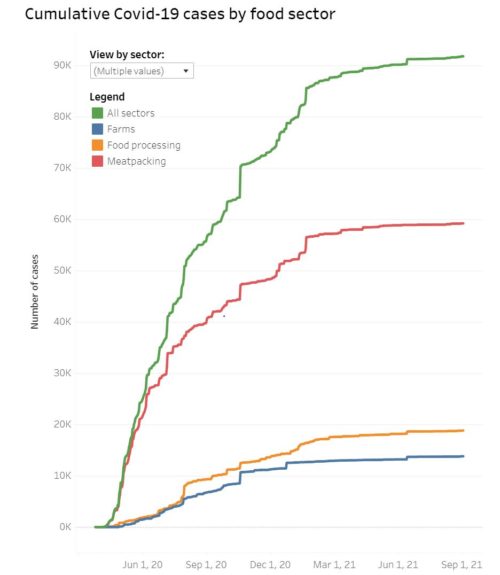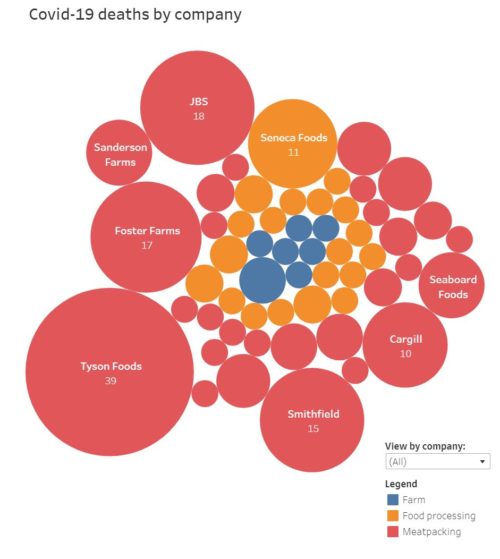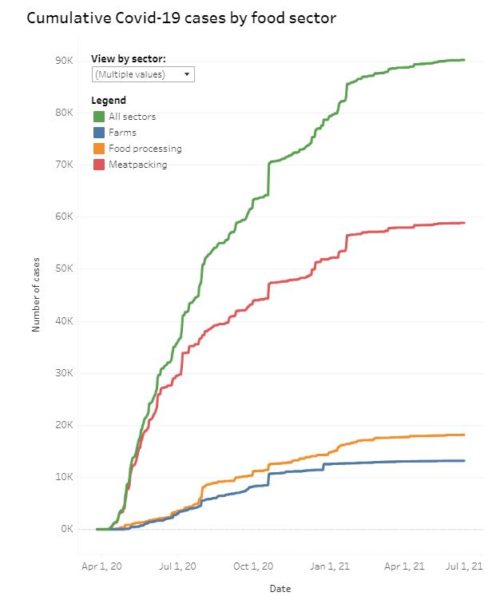Thanks Leah Douglas for your work at FERN
The Food and Environment Reporting Network (FERN) announces that its long-time reporter, Leah Douglas, is leaving to take a job with Reuters.
FERN is also giving up its counts of Covid cases and deaths among farm workers and meat-packing workers.
This week we wrapped up the mapping project of Covid-19 outbreaks at food-production facilities and farms around the nation. This nearly 18-month-long project, spearheaded and updated almost daily by staff writer and associate editor Leah Douglas, came to an end largely because of a lack of reliable data.
As Leah explains, companies and states have decided to keep much of their data secret, even with the rise of the Delta variant. But to date she has counted nearly 100,000 cases and 466 deaths among food system workers.
Here is an example of the data she produced. In the absence of any industry or government tracking, her project was all we had.

And here’s another one.

You can see why these companies don’t want anyone to have these data. Leah did a great job of working with what she could find.
I will miss her work on this project but look forward to seeing what she does for Reuters.
Congratulations Leah!


